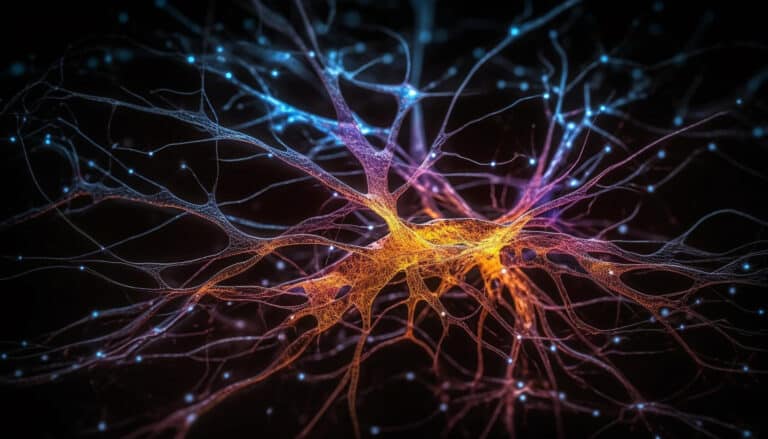Psilocybin mushrooms contain the chemical compound psilocybin, which is metabolized in the body to produce psilocin. Psilocin binds to serotonin receptors in the brain, leading to the psychedelic effects commonly associated with magic mushrooms. These effects can vary in intensity and duration depending on factors such as dosage, individual tolerance, and environment. It is important to note that the use of magic mushrooms carries potential risks and should be approached with caution. Users may experience adverse reactions, psychological distress, or even long-term psychological effects.
Psilocybin mushrooms, also known as psychedelic mushrooms, shrooms, or magic mushrooms, are fungi containing psychoactive compounds. This magic mushroom in system has been used for centuries in spiritual and religious practices as a means to induce altered states of consciousness. Along with this, they have also gained popularity for recreational use, as they can produce hallucinations, changes in perception, and altered mood.
Even though psilocybin mushrooms can produce intense hallucinations and can affect a person’s thought process, sense of time, emotions, and perception, they have potential therapeutic uses. In fact, recent studies have explored the use of psilocybin mushrooms in treating different mental health conditions. Additionally, some research also suggests that the compound may help alleviate these conditions’ symptoms by producing lasting positive mental effects.
Due to the interesting effects of psilocybin mushrooms, many people became more curious about understanding them. Luckily, you can learn everything about these magic mushrooms, including how long does mushrooms stay in your system and how long they show up on a drug test. If you are interested in shrooms, explore more below.
What Are The Effects of Shrooms?

As mentioned above, shrooms have been utilized for recreational and spiritual purposes for centuries. While some studies proved the shrooms’ beneficial effects, others suggested certain risks with their uses. This caused doubt about using the shrooms.
Well, the effects of psilocybin mushrooms vary depending on the dosage, type of mushroom, and individual tolerance. Nonetheless, there were common and noticeable shrooms effects. One of the most notable effects is hallucinations, which means magic mushrooms can distort a person’s perception of reality. This includes seeing colors, patterns, and shapes that aren’t there and experiencing vivid images and altered sounds.
Besides hallucinations, shrooms can cause physical effects on the body. They are obvious signs of body changes in regard to consuming shrooms. For instance, the muscles can become relaxed, and the pupils may dilate, increasing light sensitivity. Other common physical symptoms include increased heart rate, numbness, muscle weakness, and loss of urine control.
Moreover, shrooms can also cause psychological effects, which can be intense and unpredictable. Some common symptoms of psychological effects include disorientation, restlessness, and heightened emotions, such as euphoria and giddiness. Meanwhile, it can also cause having a “bad trip,” leading to feelings of anxiety, paranoia, confusion, and fear. These adverse consequences often require medical attention, especially since shrooms can worsen pre-existing medical conditions, such as heart disease and mental health disorders.
All in all, the effects of shrooms can vary and may not always be negative. For that reason, it is crucial to approach their use with caution. Individuals who plan to take shrooms should ensure they only use them in a safe and relaxed environment. They should also be aware of the dosage and the type of mushroom they are consuming. They should call for medical attention immediately if they experience adverse effects.
How Long Does It Take for Mushroom in System to Kick In?
The effects of psilocybin mushrooms, or shrooms, can typically take anywhere from 20 to 40 minutes to kick in after ingestion. This is because psilocybin—the active ingredient in shrooms—is quickly broken down by the body into psilocin. Psilocin then binds to serotonin receptors in the brain, which can lead to profound perceptual and psychological changes.
Moreover, the effects of psilocybin on the body and brain can be gradual, with minor changes in senses or feelings progressing to stronger sensory hallucinations. As the effects of the drug peak, individuals may experience profound perceptual changes in which their senses merge or, in some cases, dissociate. People may also experience an altered sense of time, with minutes feeling like hours or hours feeling like minutes.
Overall, the duration and intensity of the effects of shrooms depend on several factors, including dosage, individual tolerance, and setting.
How Long Does Mushrooms Stay in Your System?

Magic mushrooms can stay in the body for varying period of time depending on several factors. The metabolization and excretion process primarily determines how long shrooms remain in the system. Understanding how long shrooms stay in your system is important since it impacts the results of drug tests and other medical procedures.
Metabolization and Excretion Process
After ingestion, psilocybin is rapidly metabolized in the body and converted to psilocin, the chemical responsible for the drug’s hallucinogenic effects. The liver is primarily responsible for metabolizing psilocybin, typically taking up to two hours to complete.
Once metabolized, psilocin is quickly excreted from the body through urine. The excretion of psilocin is the main factor determining how long shrooms stay in the system. On average, shrooms can be detected in the urine for generally up to 24 hours after ingestion. However, some specialized tests, such as hair follicle tests, can detect the presence of psilocin for up to 90 days after ingestion.
Factors Affecting Detection Time
Several factors can impact how long shrooms stay in the system and how quickly they are excreted. One significant factor is body mass, as larger individuals may take longer to metabolize and excrete psilocin. Age can also play a significant role, especially since older individuals may have a slower metabolic rate.
The dose of shrooms ingested can also affect detection time. Higher doses may take longer to metabolize and excrete, resulting in a longer detection window. Consuming other substances, such as alcohol, can also impact how long shrooms stay in the system. Alcohol can slow down the metabolization process, leading to longer detection times.
How Long Does Magic Mushrooms Show Up on Drug Tests
Shroom can be a cause for concern. Because of that, it is important to understand how long shrooms stay in the system, as they can impact the results of drug tests, such as routine or specialized tests. Let’s see the different tests below:
Blood Tests
When someone ingests psilocybin, it quickly metabolizes in the body and is excreted through urine, sweat, and feces. Many drug tests focus on detecting the presence of psilocybin through these methods, but it is also possible to detect psilocybin in blood tests.
Moreover, it is essential to note that blood tests are not the most common method for detecting psilocybin in the body. This is because psilocybin only lasts about 15 hours in the bloodstream after ingestion. Therefore, most drug tests focus on detecting psilocybin in urine or hair follicle tests, as these methods can detect the substance for much longer periods.
Despite the limitations, it is still vital to be aware of how blood tests can detect psilocybin. It is a crucial tool for health professionals and employers who want to determine whether someone has used psilocybin and whether they pose a risk to themselves or others.
The bottom line is even though blood tests are not as commonly used as urine or hair follicle tests, they can still be an essential part of a comprehensive drug test for certain people, such as those individuals who have a history of regular or frequent psilocybin use.
Urine Tests
If there is a need to detect the presence of psilocybin in the body, a specially designed urine test may be used. Psilocybin can stay in urine for at least 15 hours following ingestion, with a detection window of 24 hours to 3 days. This means that if someone has used psilocybin recently, it can still be detected in their urine within this timeframe.
A psilocybin amount of 1.0 ng/L or higher in a urine sample could yield a positive result, indicating that the person has used psilocybin.
Saliva Tests
Currently, there are no specific saliva tests available that can detect psilocybin, unlike urine tests which have a greater success rate. This lack of a reliable testing method for psilocybin in saliva serum poses a challenge for researchers and lab technicians.
However, saliva testing can still be useful in detecting other substances in the body, making it a viable alternative testing method for certain drugs. Drugs such as marijuana, cocaine, amphetamines, and opioids can be detected accurately through saliva tests. This is because these drugs are easily detectable in saliva from the onset of consumption until several hours after use.
Hair Follicle Tests
As the name implies, hair follicle testing involves getting a small sample of hair from the head or body and testing it for the presence of various substances, including drugs. For psilocybin in magic mushrooms, the compound can be detected in hair follicle tests for up to 90 days after ingestion.
Hair follicle testing is among the tests applicable for detecting magic mushroom consumption. What happens when psilocybin is ingested is that the compound enters the bloodstream and is distributed throughout the body, including the hair follicles. As the hair grows, it incorporates psilocybin and other substances into its structure, allowing them to be detected and analyzed in a hair follicle test.
Like other tests, several factors can affect the detection time of psilocybin in hair follicle tests, including the dose and frequency of use. Typically, the higher the dose and more frequent the use, the longer the detection time will be. Additionally, the age of the person being tested can also impact the detection time, as hair growth slows down as we age.
Ultimately, hair follicle tests are often preferred over other types of drug tests due to their longer detection window. Unlike urine or saliva tests, which can only detect drugs for a few hours to a few days after use, hair follicle tests can detect drugs for up to 90 days. This longer detection time makes hair follicle tests an ideal option for detecting chronic drug use.
Factors Affecting Effects and Detection Time of Shrooms

The detection of psilocybin in tests can be influenced by various factors, including the dose and frequency of use, the age of the person being tested, and the type of mushroom consumed. These influential factors are worth acknowledging because they can make it easier or harder to test psilocybin. Check out these factors below:
The time between ingestion and testing
The time between ingesting a substance and testing for it can be critical in determining if a person has used drugs. For hallucinogens like psilocybin, which can eliminate from the body quickly, this is especially true. Depending on the testing method used, the sooner after shrooms are taken that it is performed, the better chance it has of being detected and providing accurate results.
Mushroom species
Mushrooms are fascinating fungi that come in many shapes and sizes. At least 75 to 200 different species of mushrooms contain psilocybin, a compound known to produce psychedelic effects. Each mushroom species contains varying amounts of psilocybin, which can impact the drug’s potency and detectability in a drug test.
Regarding potency, psilocybin-containing mushrooms can differ greatly from species to species. Some species may be more potent than others due to the differing levels of psilocybin. That’s why it is essential to consider the species of mushroom consumed when assessing the potential effects and detection time of shrooms.
Method of use
When it comes to consuming shrooms, several methods are available, including eating them fresh or dried, mixing them into food or drinks, or brewing them in tea. Each method can affect the potency and duration of the effects differently.
For example, fresh shrooms tend to have a milder effect than dried shrooms, mainly because they contain more moisture, which dilutes the concentration of psilocybin. However, fresh shrooms can still lead to a strong high and are often preferred by some consumers for a more subtle experience.
On the other hand, dry shrooms are more potent due to their reduced moisture content. As a result, their effects tend to last longer, and users may experience a more intense high. Dried shrooms are also easier to store and can be used longer.
Many users also prefer to mix shrooms into food or drinks, wherein the most popular being smoothies and chocolate bars. The effects of shrooms mixed with food can take longer to kick in, but the duration tends to last longer, making it a popular choice for those individuals who want to enjoy a prolonged high.
With all that said above, it is indeed crucial to consider the method of use when assessing the detection time of shrooms in the system and the potential for detection on drug tests.
Dose
Along with the other factors, the dosage consumed also plays a critical role. Generally, consuming larger doses of shrooms can lead to longer periods of detection in the body. This suggests that the higher the dose, the longer it will be before the effects wear off and the shrooms can be detected on a drug test.
Moreover, consuming high doses of shrooms can lead to dangerous physical and mental effects. Some users may experience auditory hallucinations, increased heart rate, changes in body temperature, and dry mouth. Other people may experience more severe effects, such as muscle weakness, blood pressure changes, and respiratory distress. In extreme cases, consuming high doses of shrooms can even lead to life-threatening situations.
Your Body
Arguably, there are several factors to take into account when it comes to how quickly shrooms are excreted from one’s system. Among the most significant factors is a person’s body, which includes their body mass index (BMI), metabolism, age, and water content. By understanding how these factors impact the detection time of shrooms in one’s system, individuals can make informed choices about their consumption.
BMI, by definition, is a measure of a person’s body fat based on their weight and height. Generally, individuals with a higher BMI will have a longer shroom detection time. This is because shrooms are stored in fat cells, so it takes longer for the body to break them down and excrete them from the system.
Metabolism also plays a crucial role in how quickly shrooms are processed. Individuals with a fast metabolism generally have a shorter detection time for shrooms. This is because a faster metabolism breaks down substances in the body more quickly and efficiently.
Age is another significant factor to consider when assessing the detection time of shrooms. Younger individuals tend to have a faster metabolism and a lower BMI, which can lead to a shorter detection time for shrooms compared to older individuals. The older the person is the higher the chance of the delay in excretion of psilocybin.
Moreover, water content also plays a role in how quickly shrooms are excreted from the body. The more hydrated a person is, the shorter the detection time will be. This is because water aids in flushing toxins out of the body more quickly.
Remember that the presence of food and liquid in the stomach can also affect how quickly shrooms are processed. If a person consumes shrooms on an empty stomach, they may feel the effects more quickly, but the detection time may also be shorter. Conversely, if a person consumes shrooms with a meal, digestion will slow down, leading to a longer detection time.
Other substances
Combining shrooms with other drugs, whether illicit or prescription medications, can lead to unpredictable effects and potentially dangerous outcomes.
One of the most significant threats of combining shrooms with other substances is the potential for negative interactions. Mixing shrooms with certain medications—such as antidepressants or antipsychotics—can result in serotonin syndrome, a potentially life-threatening condition. Other drugs, like alcohol or benzodiazepines, can increase the sedative effects of shrooms, leading to extreme drowsiness or even respiratory failure.
Polydrug use, or the use of multiple substances simultaneously, can also impact how long shrooms remain detectable in the body. Polydrug use can decrease or increase the detection window for shrooms depending on the specific drugs being used. For example, the use of cocaine or amphetamines can decrease the half-life of psilocybin, making it less detectable in the body over a shorter period of time. The use of some prescription medications, on the other hand, can increase the detection time for shrooms.
To guarantee the safe and effective usage of shrooms, it’s essential to understand the potential dangers of combining them with other substances and exercise caution when using polydrug. If you’re taking prescription medications, speak with a healthcare professional before using magic mushrooms to avoid potentially harmful interactions.
Ways to Get Shrooms Out of Your System Faster
Once shrooms are ingested, their active substance, psilocybin, is converted to psilocin and absorbed into the bloodstream, leading to a shroom trip lasting several hours. After the effects of shrooms wear off, the substance can still be detected in the body for several days, depending on various factors.
First and foremost, it’s important to note that there is no guaranteed method to get shrooms out of your system faster. Drinking water, while helpful in keeping you hydrated, may help move the substance through your system a little faster. However, it’s unlikely to make a significant difference if you’re trying to avoid detection.
Several variables impact how long shrooms remain in the body. These include dosage, frequency of use, and overall health. Higher doses and more frequent use can lead to longer detox duration, while overall body health affects metabolism, excretion, and the detection of shrooms in the body.
Additionally, the species of mushrooms and the method of use can impact the potency of the substance and, consequently, the detox duration. Different mushroom species contain varying amounts of psilocybin; some may take longer to detoxify than others. Similarly, consuming shrooms through tea or ingesting fresh shrooms could lead to faster absorption and a quicker detox duration than consuming dried shrooms.
In conclusion, while drinking water and maintaining good health can help shorten the time it takes for shrooms to exit your system, there is no surefire method to speed up the process. Ultimately, the duration of shroom detox depends on several factors, and it’s best to consult with a medical professional if you’re experiencing any symptoms of mushroom poisoning or have concerns about the substance’s detection time in your system.
Frequently Asked Questions
This FAQ section can be incredibly helpful if you want to learn more about the shrooms and other relevant information about magic mushrooms:
Final Thoughts
Despite the promising potential in aiding the treatment of different conditions, magic mushrooms are still considered dangerous. In fact, it is more concerning that using shrooms can result in various physical and mental health complications. That’s why it is important to seek immediate help and treatment as soon as signs of substance abuse become apparent to avoid further risks and complications. More than that, it is highly suggested to join professional treatment programs for better recovery and lifestyle improvements. After all, frequent use of psychedelic mushrooms can result in severe physical and mental health consequences.
With all that said, it should not be a choice to get treatment for substance abuse related to psilocybin mushrooms. Since they can cause issues that can disrupt day-to-day life functioning, shrooms are not the best alternative to aid in treating health conditions. But you don’t have to trouble your mind if you or a loved one have already used shrooms and want to slowly quit to avoid withdrawal symptoms. Luckily, different treatment options are available for individuals suffering from substance abuse related to psilocybin mushrooms.
The most common treatment is detoxing, which means removing all traces of the shrooms. This should be done with the guidance of a professional to avoid complications. In addition to that is the Cognitive-behavioral therapy (CBT). It is another effective treatment option focusing on changing negative thoughts and behaviors related to substance abuse. Hence, CBT helps develop coping mechanisms to deal with underlying factors contributing to the abuse of shrooms.
Besides the two, other specialized treatment options include support groups, family therapy, and inpatient or outpatient rehabilitation programs. For that reason, you don’t have to doubt recovering from the use of magic mushrooms. It is worth it to seek professional help because it is the key to lifestyle improvement. Quitting psilocybin abuse can significantly improve your or your loved one’s overall health and well-being, relationship with people, and career opportunities.
Remember that Costa Rica Treatment Center is always here to help. Get a free evaluation today.








